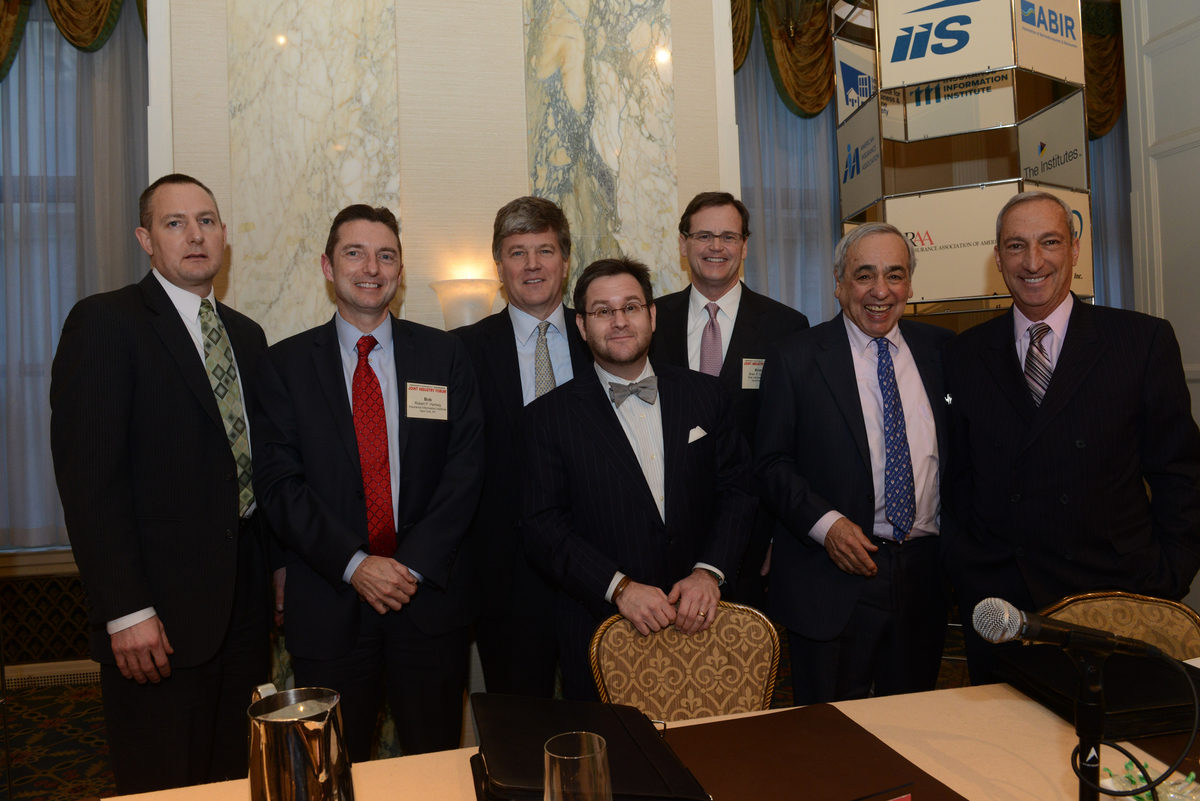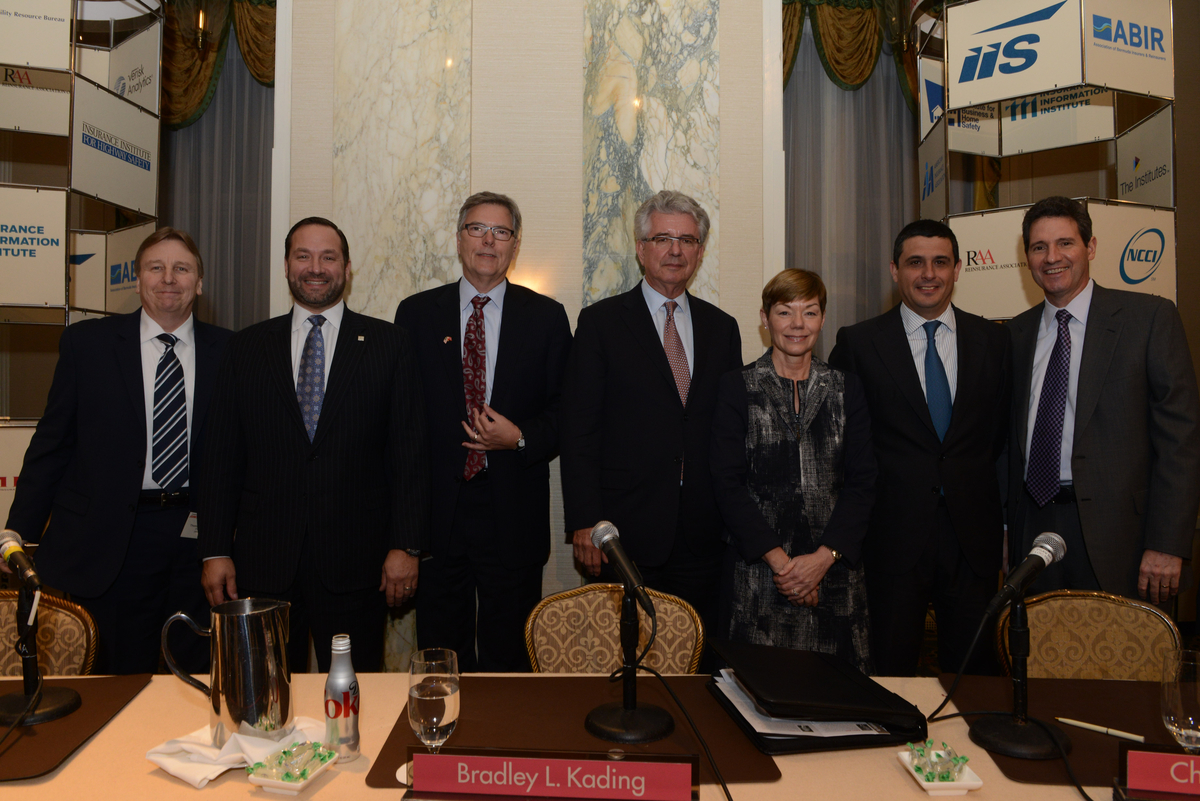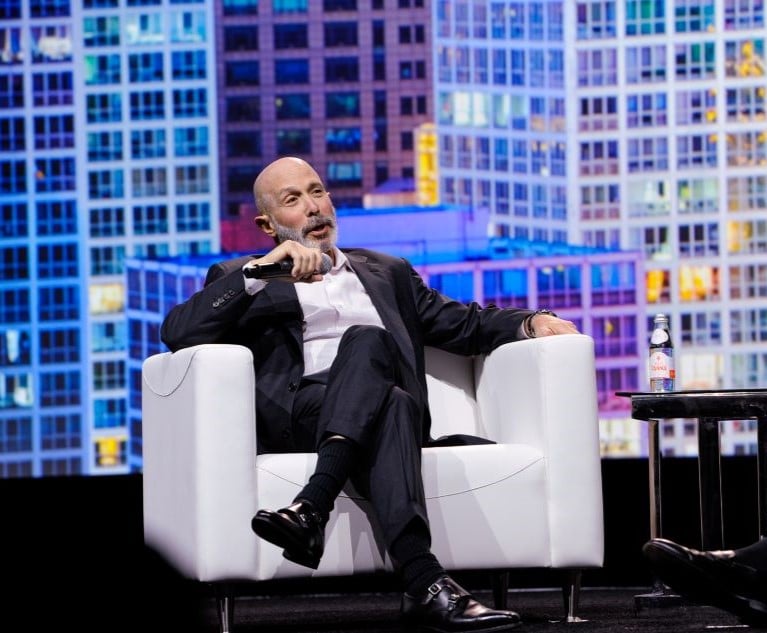Is the property and casualty insurance economic picture betterfrom the outside looking in or the inside looking out? A panel ofoutside experts, followed by a panel of insurance company CEOs,considered this question recently at the Property/CasualtyInsurance Joint Industry Forum, held Jan. 13 at New York'sWaldorf-Astoria hotel.
|When asked by moderator Robert P. Hartwig, president andeconomist, Insurance Information Institute, about the 2015financial outlook for P&C insurers, the industry experts,looking in, found the economic picture mixed, with all lines facingrate pressure. Matthew Mosher, senior vice president, GlobalRatings at A.M. Best Co., said that Personal lines should be stableon rates and loss costs; however, he had a more negative outlookfor Commercial lines. Reinsurance companies especially are dealingwith rate pressure, new entrants into the marketplace and shrinkingreserves.
|Vincent J. (V.J.) Dowling, managing partner of Dowling &Partners, said that insurers are “taking more cookies out of thejar than they’re putting in.” Although catastrophes were fewer thananticipated in 2014, insurers still incurred $30 billion inlosses.
|Dowling also says he is increasingly concerned about lowinterest rates continuing for a long time, which lets thegovernment help borrowers not savers, like the insurance industry.He noted that about 40% of revenue for insurance companies is fromtheir underwriting profits. The companies aren’t earning much onthe investment side with only single-digit returns.
|Thomas B. Lombardi, a senior insurance advisor at Evercore, aglobal investment banking advisory firm, and former insurancecommissioner for the state of Connecticut, noted that the highmargins in reinsurance are eroding the market. The issue, he said,is that there are historically low yields on bonds andnontraditional players in the market. In addition, regulators don’tcompletely understand the risk this group faces. He says hebelieves the small players will get left behind.
|Regarding Cyber coverage, Randy J. Maniloff, an attorney atWhite and Williams LLP, said that from a claims perspective, he’snot sure where Cyber is going. Policies are being marketedaggressively, he said, and at first claims will be paid well. Thetake-up rate is estimated to be about one-third of companies in theU.S., but he thinks that’s too high. There are too many sellersright now.
|P/C Insurance Joint Industry Forum Panel of Experts (Photoby Don Pollard Photo)
|It’s about the customer
|Brian Sullivan, editor and publisher of Auto InsuranceReport and Property Insurance Report, noted thatthere has been significant consolidation in auto insurance, and heexpects more to come. “You can’t be stupid,” he said—a comment thatresonated with the audience as well as fellow panelists. “There’sroom for every kind of insurance company, regardless of size,” aslong as the company makes smart decisions.
|Howard C. Kunreuther, James G. Dinan Professor; Professor ofDecision Sciences and Business and Public Policy at the WhartonSchool, and co-director of the Wharton Risk Management and DecisionProcesses Center, concurred that companies can’t be stupid, but hesaid the better question is how to increase the level of protectionfor customers. He focused on the need to change human behavior, thenotion that before a disaster strikes people believe “It won’thappen to me.” They buy earthquake or flood insurance only after aloss (if they’re not required to by their mortgage company, forexample).
|The experts agreed that competitive pressure is restraininggrowth with minimal to no growth in personal lines claims. Forexample, safer autos and social pressure for driving safelycontributed to fewer accidents. With fewer accidents, companieshave less justification to increase premiums, leading to moreintense competition on rates and long-term revenue decline.Homeowners claims, by comparison, are projected by Dowling to bebigger than auto over the next 15 years. “He who controls thecustomer wins,” he added.
|When asked about industry consolidation, Dowling said that hehas seen more change in the last three years than in the previous30. The influx of third-party capital—from pension funds and hedgefunds, for instance—is changing the underlying economies of theindustry.
|To continue to grow, Kunreuther said, the industry has to focuson the risk management side, primarily long-term strategies as wellas short-term returns. Lombardi concluded that the industry has toreinvent itself, looking for cost effectiveness and scale. If not,he said, small players will be left behind.
|P/C Insurance Joint Industry Forum Panel of CEOs (Photo byDon Pollard Photo)
|Inside looking out—CEO perspective
|The panel of CEOs also considered the P&C insurancefinancial picture, and their views were mixed. When asked for theirpredictions by the moderator, Bradley L. Kading, president andexecutive director, Association of Bermuda Insurers and Reinsurers,Paula Downey, president and CEO of CSAA Insurance Group, a AAAInsurer, said that from a personal lines perspective, she thoughtthe outlook was stable. She agreed that there would be relativelylow growth rates for auto and homeowners coverage, noting that newcar sales are up but new home sales are not.
|Downey also noted that companies are growing by taking marketshare from other insurers. Her brand is strong, she said, and thecompany has good control of its distribution channel. Her biggestissue for 2015 is how to deploy capital to invest in infrastructureand better compete. She plans to maintain pricing discipline whilepursuing a growth strategy.
|Jaime Tamayo, president and CEO of MAPFRE USA, said that he seesexcess capital in U.S. P&C companies. He advised insurers toeither accept low returns on equity or put their capital to work.The biggest challenge to Tamayo’s Personal lines business is theunpredictable weather pattern, causing losses that are less thancatastrophic but significant nonetheless. The low interest rateeconomic environment and compressed margins also are concerns.
|Henry Klecan, managing director, P&C and Life operations forSCOR, a global reinsurance company, said that the equity returns on“not spectacular,” but the balance sheet is strong. For 2015,Klecan said that commercial lines companies need to become smarterabout risk selection and they need to understand their customersbetter.
|According to Thomas A. Lawson, president and CEO of FM Global,there is downward pressure on rates across the board. Companiesneed to continue to make smart decisions and maintaindiscipline.
|Steven D. Linkous, president and CEO of The Harford MutualInsurance Cos., reminded the audience to “remember you’re aninsurance company and make good underwriter decisions.” Ifcompanies can follow this advice, they can remain profitable for2015, despite the economy’s ups and downs.
| Manufacturingreturns to U.S.
Manufacturingreturns to U.S.
Lawson has seen a shift and redirection of manufacturing back tothe U.S., and an investment in risk improvement, which bodes wellfor his company’s clients. Swift agreed that there has been areturn of manufacturing to the U.S. by smaller companies,especially in the Midwest and the South, a sign of an improvingeconomy.
|Although agreeing that the return of manufacturing wasdefinitely a positive sign, Klecan found the significant, rapiddrop in gas prices troubling. He said that the drop could cause aslowdown in existing building or expansion projects, as well asdelays in starting others.
|Growth strategies
|Downey said that she is focused on expanding in the U.S., As aAAA insurer, she has a defined customer segment in AAA members. Sheis looking at building capabilities, especially for directdistribution.
|All avenues of growth are valid, Tamayo said. He is looking atdistribution, geography, new products and M&A. His companylaunched a new life insurance company in Massachusetts in 2014, forexample. He also maintained that acquisitions are about the dayafter the deal closes. It all has to fit and make sense then.Klecan agreed that M&A has to be strategic, and integration ofthe companies after the merger has to be well thought out.
|Swift plans to increase penetration in the Midwest and improvedistribution relationships. He is looking at a broader array ofsolutions to stimulate growth. He said that it’s important toeducate customers about their exposures and risk, then ask them howthey would pay for a loss. That conversation gets them thinkingabout increased liability and increased coverage needs.
|Tamayo concluded by reminding the audience to think aboutinternationalization. Don’t expect 20%-30% growth in a maturemarket like the U.S. and Europe, he said. Instead, companies shouldbe looking to Latin America or Eastern Europe, for example, wherethere are stable governments and there may be 10%-12% growth.
Want to continue reading?
Become a Free PropertyCasualty360 Digital Reader
Your access to unlimited PropertyCasualty360 content isn’t changing.
Once you are an ALM digital member, you’ll receive:
- All PropertyCasualty360.com news coverage, best practices, and in-depth analysis.
- Educational webcasts, resources from industry leaders, and informative newsletters.
- Other award-winning websites including BenefitsPRO.com and ThinkAdvisor.com.
Already have an account? Sign In
© 2024 ALM Global, LLC, All Rights Reserved. Request academic re-use from www.copyright.com. All other uses, submit a request to [email protected]. For more information visit Asset & Logo Licensing.










